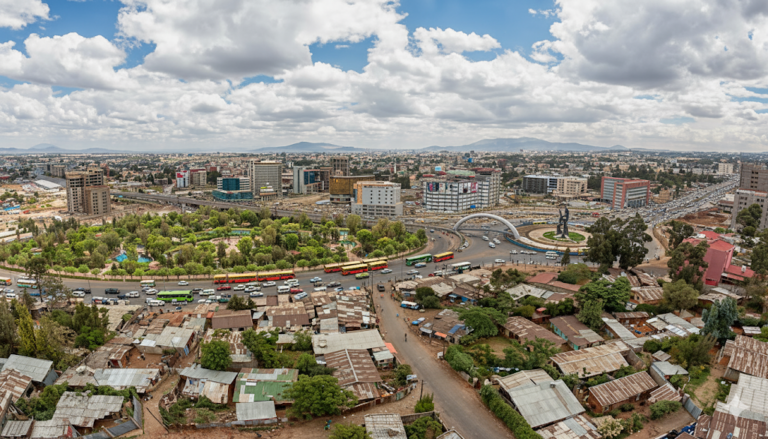How do you navigate the different priorities of stakeholders trying to change the built environment? What can engineering students do to contribute? Can sustainable construction techniques in Africa be applied in other countries? Dr. Rue Munemo at EPFL’s Centre for Worldwide Sustainable Construction took these questions and others following her Engineering for Change seminar, Pathways Toward Sustainable Construction in Africa. Time ran out on the Q&A, but Dr. Munemo emailed her responses to the questions she missed.
Here we present Dr. Munemo’s answers to your questions, lightly edited for print. And if you’d like to see more, find highlight clips from the presentation at the seminar’s page below.
E4C Seminar | Pathways Toward Sustainable Construction in Africa
Q: Would you talk a little bit about how you navigate the priorities of different stakeholders in terms of trying to actually get changes into the built environment? People like homeowners, sustainability organizations, government, etc.
RM: I love that question so much, because it touches on a lot of the work we do. Regardless of how you look at it, the built environment itself is complex. To introduce sustainability, you’re actually trying to tell people how to live their lives. When you look at someone like a cement producer who owns their own business, the last thing they may care about is the environment. They’re more concerned about their business surviving. And same thing for the end user; their main concern may be that they want the cement, and they’re not thinking about how it is produced.
It’s not really about forcing ideologies on people, but understanding their stances and delivering them what they need wrapped up in sustainability and resilience. You wrap it up in all their needs. You tell them, sure, you care about they care about, but if they could do it differently, at the end of the day, it’s sustainable. It’s resilient. We have to be conscientious in trying to discover solutions that include the goals of the stakeholders, because they do exist.
Problems arise when people are not trying to localize their solutions. It is a problem when someone says, ‘This worked in America, so we want to do it here.’ You have to remember, the needs for a house in in Zimbabwe are different from the needs for a house in America. You have to think about these things, because no matter what, it’s about contextualizing. That’s how you navigate this entire chaotic field.
Q: Would reducing construction equipment emissions help? Tractors, generators, pumps, delivery vans, etc.?
RM: Emissions of construction equipment are intrinsically included in the embodied emissions as a key part of processes. Attention is given to these factors with electrification of certain equipment being the main leverage point.
However, electrification is only helpful in reducing emissions if the electricity grid or supply is from a renewable source. Otherwise, the emissions are just shifted from being direct to indirect. There is plenty of merit in this, but the emissions from material extraction and production far exceeds the emissions of the equipment so for greater impact in reduction, that is why my presentation focuses more on the material and design side, especially in Sub-Saharan Africa where electrification of construction equipment requires a bit more infrastructural elements to be put in place.
Q: How should we engage policymakers?
RM: I believe there is great opportunity in engaging policymakers. Particularly, building codes and regulations in most countries are outdated and do not adequately reflect the current sustainability challenges or the potential of innovative materials. By collaborating with policymakers, industry professionals can advocate for updated standards that recognize the environmental and structural benefits of masonry and other sustainable materials.
This can include evidence-based policy briefs, pilot projects demonstrating performance, and partnerships with research institutions to build a strong case for reform. Such engagement can lead to more flexible and forward-looking regulations that encourage sustainable construction practices and reduce the environmental footprint of the built environment.
Q: In your experience, what roles can environmental NGOs play in strengthening sustainable construction roadmaps, and which of these roles do you find most valuable?
RM: I believe that NGOs are key in Africa especially in identifying the gaps that typically would be filled by local governments/public sector and mobilising resources, expertise, and community engagement to address specific challenges in sustainable construction. By leveraging their local knowledge, networks, and flexibility, NGOs can work complementary to governmental efforts, pushing initiatives that the government may not have capacity to advance on their own.
Q: I am interested in finding out how cement and other construction materials are being used in more African countries.
RM: There are quite a few articles that explore the use and choice of construction materials in Africa. The Centre for Affordable Housing Finance in Africa has a good number of resources on this and case studies.
Q: I find the assessment that water security is ranked lowest on the priority of householders entirely unrealistic.
RM: My earlier point may not have been clear. It is not that people disregard water security; rather, many are compelled by circumstance to pursue self-construction in the absence of basic services such as electricity, water, sewage, or roads. In many such areas, households rely on boreholes, wells, or other personal water sources. Therefore, the issue is less about a lack of concern for water security and more about limited access and constrained options. Without a doubt, resilience is, and rightfully should be a priority for both sectors
Q: What do you think engineering students can do to contribute? And what can professors do to contribute? Because it’s very inspiring to hear what you’re working on.
RM: So that’s probably my favorite question. Starting with students, the most important thing now is shaping the up-and-coming engineers to come out of their degree programs with an understanding of sustainability. Sustainability is actually just a part of construction if we want the environment to work long term for everyone involved in it.
As engineers, we know a lot of things about, say, safety factors. I’m a structural engineer and I love my safety factors. But, if prior to all this research, someone had asked me, ‘How do you choose a sustainable material?’ That’s not something that you’re equipped with from the get-go.
We need to start presenting students with an understanding that they’re not in isolated fields. It’s not like a civil engineer will just be working with other civil engineers forever. You have to interact with the designer, the contractors and others. Architects need to understand that when you design a building, it shouldn’t be just for the aesthetics, but rather, how can you efficiently design that building to be more sustainable to construct for everyone involved in that process. That shouldn’t be up to the students to learn on their own. That’s up to the professors that design the courses. So it’s an interconnected link.
At the moment, I’d say attending webinars like this is quite good for engineers. And if you’re interested and would like to get in touch with me, we’re always looking to find people on the ground that are studying, that are working in Africa, to ensure that any work that we do, any ideas that we’re coming up with, are grounded in what people need. And the more people you’re connected to, the more you’re able to ensure that we are actually co-creating a good and sustainable built environment.
Q: We’re looking at built environment Africa, but this is a question that has global implications, right? What is your vision for the built environment everywhere?
RM: Yeah, so we actually do work in Asia as well. In sub-Saharan Africa, there are some cultural similarities between the different countries, even though they are all still very different. But what we’re seeing in Southeast Asia specifically is they are in a transition point. Their economies are shifting and some there’s a bit more advancement in the technology and the use of concrete in a lot of these countries.
One of the other differences between Southeast Asia and Africa is the climate and the style of housing. So it’s things like that, where the minute the style changes, then you have to rethink what kind of materials are more aligned. The approach is similar, but the people and their needs can change. The one thing we all understand, though, is with developing countries, you don’t really have control of all facets.
The Engineering for Change Seminar Series features academic laboratories researching solutions to meet the United Nation’s Sustainable Development Goals. The world’s cutting edge research deserves a platform with a global audience. Join us for presentations of new findings from investigative teams around the globe.
Researchers, we welcome your applications to take part in the series. Please send an email to editor@engineeringforchange.org.

